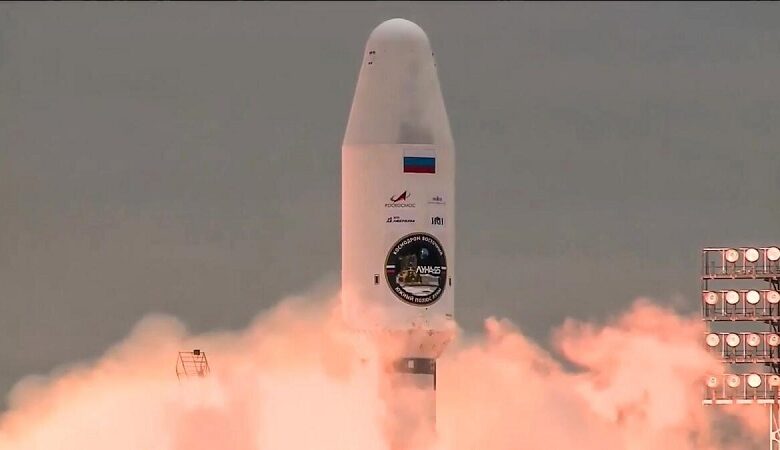Lunar Race: Russia’s Moon Mission Races Against India’s Lunar Craft

In a momentous event, a rocket carrying a lunar landing craft soared into the skies on 11th August, marking Russia’s first moon mission in almost five decades. The mission, named Luna-25, is poised to land on Earth’s celestial companion, racing against an Indian spacecraft. The launch occurred from the Vostochny spaceport in the Far East of Russia, and the lunar lander’s journey to the moon marks Russia’s return to lunar exploration after its last mission in 1976 as part of the Soviet Union.
Anticipation surrounds the Luna-25’s trajectory, with its projected moon landing slated for August 23, coinciding with the expected arrival of an Indian craft that was launched on July 14. The Luna-25 spacecraft is estimated to undertake a journey of approximately 5.5 days to approach the moon’s vicinity, followed by a period of orbiting at an altitude of around 100 kilometres (62 miles) for three to seven days before commencing its descent to the lunar surface.
Successful moon landings have been achieved by only three governments thus far: the Soviet Union, the United States, and China. Now, both India and Russia are aiming to become the first nations to touch down at the moon’s south pole. The mission holds symbolic significance for Roscosmos, Russia’s space agency, as it seeks to showcase Russia’s capabilities in delivering payloads to the moon and secure guaranteed access to the moon’s surface.
However, beneath the scientific exploration lies a deeper layer of political competition, as international superpowers China and the USA vie for dominance in space exploration. Vitaly Egorov, a prominent Russian space analyst, underlines this aspect, emphasizing that the pursuit of lunar study is intricately linked to a geopolitical rivalry.
The journey towards lunar exploration has faced its own set of challenges, particularly with sanctions imposed on Russia due to its actions in Ukraine. These sanctions have hindered Russia’s access to Western technology, impacting its space program. Consequently, adjustments were made to the Luna-25 mission, such as abandoning the initial plan to include a small moon rover. This decision was driven by the necessity to reduce the craft’s weight, thereby enhancing its reliability.
The Luna-25’s successful launch from the Vostochny Cosmodrome marks a significant milestone for Russian President Vladimir Putin’s efforts to elevate Russia’s position in space exploration. The spaceport, a personal project of Putin’s, aims to elevate Russia to the status of a space superpower and shift the nation’s launch activities from the Baikonur Cosmodrome in Kazakhstan.
The south pole of the moon holds substantial scientific interest due to the potential presence of permanently shadowed polar craters, which could contain water. The discovery of frozen water in these regions holds promise for future exploration, as it could be transformed into essential resources like air and rocket fuel.
Astronomers and scientists point towards the moon’s uniqueness and pristine nature, emphasizing its role as a veritable laboratory. The Luna-25 mission’s objective includes collecting samples of moon rock and dust, an essential step in comprehending the lunar environment before contemplating the construction of any future lunar bases. By studying the moon’s history and characteristics, researchers seek to optimize future endeavors and safeguard equipment from the abrasive conditions prevalent in space.
News Mania Desk / Agnibeena Ghosh 11th August 2023






